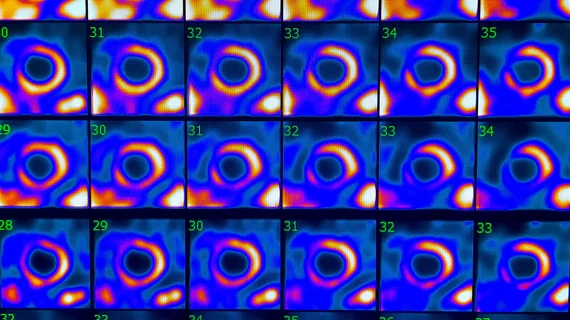Global shortage of nuclear imaging isotopes may be over
The nuclear imaging isotope shortage of molybdenum-99 (Mo-99) that was predicted to paralyze cardiac nuclear imaging may be over much sooner than expected. An update from the Nuclear Medicine Europe Emergency Response Team said its high-flux reactor (HFR) in the Netherlands has successfully restarted and the group anticipates that the normal global supply of Mo-99 will be achieved later this week.
The American Society of Nuclear Cardiology (ASNC) said in a notice to its members that a South African reactor has also increased production Mo-99 to help offset the impacts of the shortage that has affected some nuclear cardiology labs.
Mo-99 is used to produce technetium 99m, the tracer used in single photon emission computed tomography (SPECT) imaging, which makes up about 80 percent of nuclear imaging exams.
"There were some difficulties over the past couple weeks. Personally, I did have an impact from the shortage and I have heard of a lot of impacts around the country. I think at this point, we're feeling good that it's been mitigated and that we should not continue to have shortages," explained ASNC President Lawrence Phillips, MD, MASNC, an associate professor and the director of the nuclear cardiology laboratory at NYU.
He said it was an eye-opening experience to she the short-lived isotope shortage and realize the domino effect it can have. Phillips said different locations around the country got hit at different times, likely due to how the radiopharmaceutical supply chain works. The U.S. relies on foreign reactor production for its supply of Mo-99.
How centers mitigated the technetium shortage
Unlike past shortages of technetium due to previous reactor shutdowns, Phillips said this one was a little different because there has been an expanding number of centers adopting positron emission tomography (PET) imaging. PET relies largely on rubidium-82 generators that do not require Mo-99, so these systems were immune to the shortage.
"To mitigate the shortages, a couple of the centers I spoke with ended up trying to change patients over to PET, which was really successful for a good number of groups. And we're seeing that, because there's definitely an uptick that's occurring in cardiac PET and that's allowed a good ability to mitigate some of the issues over the last couple of weeks," Phillips said.
Since most nuclear cardiology imaging studies are still SPECT, additional measures were needed to mitigate the short supply.
"Unfortunately, there was some rescheduling of patients, sometimes last minute, but really we are trying to get the patients back in as quick as possible," Philips explained.
He said many centers also conserve supplies by using a lower dose with longer imaging times. Phillips said this allowed centers, especially high volume locations, to stretch things further. This strategy was successful in allowing centers to not have to decrease the number of doses they could use by just changing the workflow.
Phillips also heard of some centers that are doing stress first SPECT imaging. This enabled centers the ability to do stress only exams and not need rest imaging by determining if the patient had any high-risk features on their perfusion scan. This also helped lower the amount of technetium needed.
If the supply of technetium was unavailable, some centers also sent patients for CT scans in some cases as an alternative.
Conversion to PET and new SPECT technology made a difference
Phillips said the growth in PET definitely impacted this shortage by allowing patients to be switched to a different modality. He said this goes along with ASNC really pushing the past several years for centers to upgrade the older technology in their labs and to optimize their protocols. Even at labs that went to solid-state CT digital detectors for SPECT, or those that adopted new software able to reconstruct lower-dose images were able to use lower technetium doses without suffering imaging quality.
"The more people have listened and really moved forward with increasing or improving the quality of the camera systems they have, the better prepared they're going to be for shortages like this," he said. "All those other changes that have taken place over the last couple of years kind of kicked in, so I think that's what made it less of a problem."
However, PET systems really were able to take off the burden of not having enough technetium at centers that had the technology available.
"We were able to increase the utilization of our PET systems to do some transitions and then we were able to use lower doses for other patients. So we did not have to reschedule any patients at NYU," Phillips said. "I think because we've seen this growth in PET over the last couple of years, that allowed us to mitigate some of the shortage of technetium because we had other options within the nuclear cardiology world."
He said PET has seen growth year-over-year for several years now. He added that the growth is expected to expand much faster with the recent FDA clearance of the new PET tracer flurpiridaz F-18.
"The idea of unit doses really changes the financial planning that they have allowed us to do, especially for a low volume lab to set up their program earlier. And so I think we we're going to see that really significant growth in PET over the next five years in cardiac."

